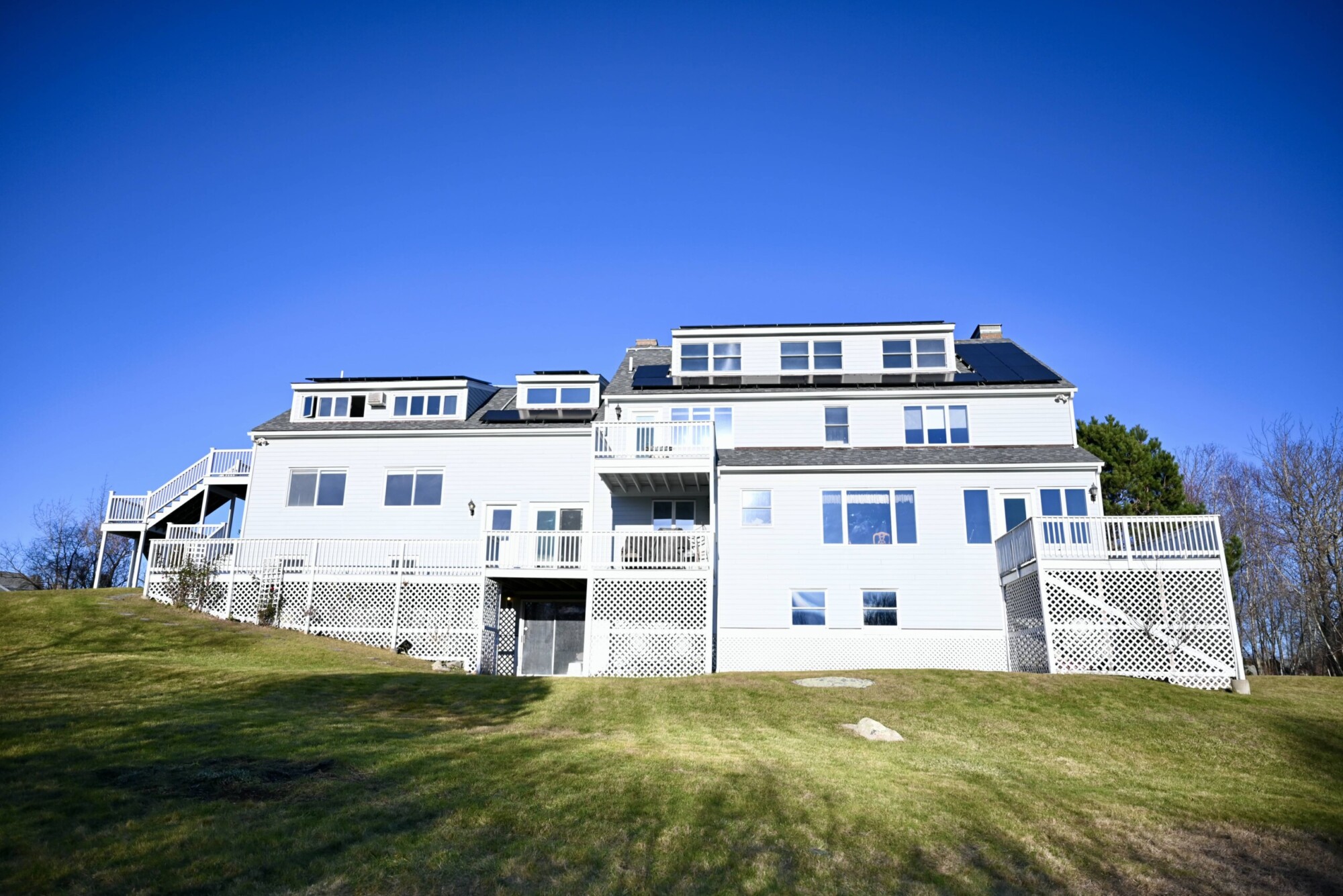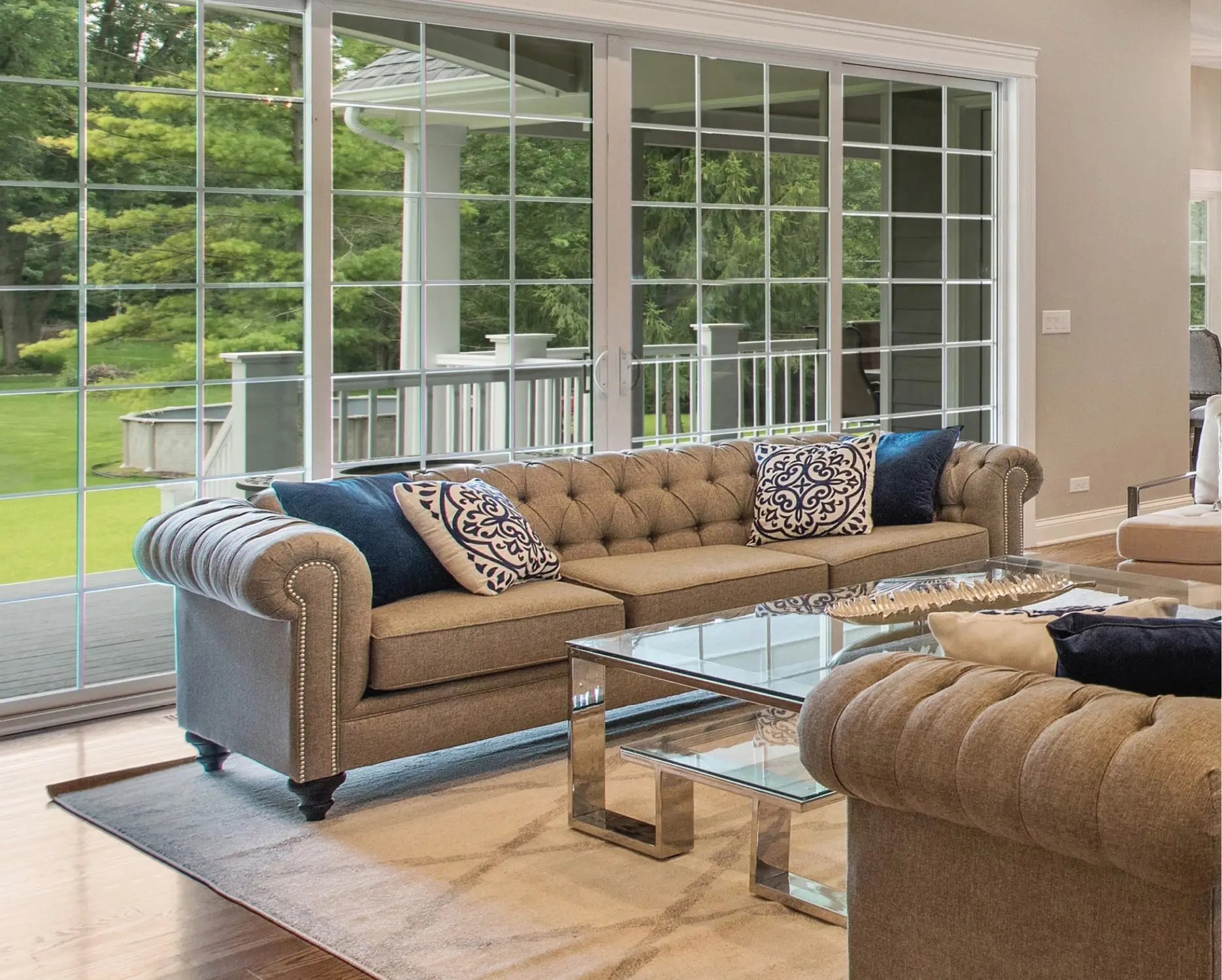
We’re all familiar with tall tales and myths like Nellie the Lochness Monster. But did you know that there are myths in the world of replacement windows as well? Some myths about replacement windows can ultimately lead to poor decisions and even make you spend more money. Luckily, we’re here to set the facts about windows straight for an easy, enjoyable window installation upgrade.
As a local window contractor in New England, these are the most common misconceptions that we run into.
Misconception #1: You Can’t Install Windows in the Winter
Spring, summer, and fall are the most common times of the year to install windows. Window installation schedules especially get booked up in the spring and fall, as homeowners are anticipating hot or cold weather ahead.
And speaking of cold weather–you can install windows in the winter! While it’s not ideal, it’s definitely doable. In fact, we install windows all year long, including the winter season.
What’s Different About Winter Window Installation?
To help conserve energy during winter window installation, here’s how we approach your project during the winter season:
- We remove 1 window at a time
- Large windows will have plastic put up in front of the opening to reduce energy loss
- Our crew works efficiently to install windows quickly, all while making craftsmanship our top priority
- We can install when it’s snowing, as long as we have clear access to the windows from outside the home
If you want to learn more about cold weather winter installation, check out our blog: Worry-Free Winter Installation: What to Expect During Cold Weather Window Installation.
Misconception #2: The Best Windows Completely Eliminate Drafts
With your new investment, you’ll want to know the facts about windows when it comes to drafts. While quality windows are great at reducing drafts in the home, no window will completely eliminate drafts. The only way to get rid of drafts completely is with a solid wall–as it’s the only exterior element of your home that is 100% airtight.
However, the good news is that you can still dramatically reduce drafts in your home. The key is to look for windows with the lowest air infiltration rating possible.
For example, our windows are the lowest-rated at .01 CFM, making them 23 times more airtight than the average replacement window.
Misconception #3: All Replacement Windows Save Energy
While it’s certainly true that replacement windows can improve energy savings, this isn’t the case for all windows. The truth is that some windows won’t save you much (if any) energy at all.
But there are a few ways to tell if you’re getting energy efficient windows. First, ask about insulating gases such as argon or krypton. These gases keep your home warmer in the winter and cooler in the summer. Combined with low-e and even triple pane glass, you’re well on your way to saving potentially hundreds of dollars each year!
One of the last methods of ensuring you’re getting energy efficient windows is with Energy Star. This is a certified program that rates the most energy efficient windows in New England. Just look for the blue seal!
Misconception #4: Replacement Windows and Construction Windows are the Same Thing
Stop right now if you are building a new house or planning to replace windows in your existing home. Replacement windows and construction windows are not the same thing!
Replacement Windows Fit Inside Existing Frames
Windows are specifically designed for retrofitting into existing window frames, offering a convenient and cost-effective solution for homeowners looking to enhance their home’s energy efficiency and aesthetic appeal without the extensive labor associated with full-frame removals. These windows are ideal for projects where the existing window frames are still structurally sound and only the window itself needs to be upgraded.
New Construction Windows: Building from the Ground Up
New construction windows are used primarily during the initial construction of a home or during extensive renovations where the wall structure is exposed. These windows come with a nailing fin designed to be installed directly onto the framing, providing a secure and weather-tight seal. This option is suitable for projects that involve significant structural changes, allowing for greater flexibility in terms of window size and design.

Misconception #5: Windows are Measured Using Inches or Feet
Your windows will certainly need measuring before you can get new ones installed. But did you know that you don’t measure windows using inches or feet? This is one of the little-known facts about windows that most homeowners don’t know.
The way that you measure windows is with United Inches. This term was originally invented by the window industry, which combines the width and height in inches and use it as a single measurement of length. Simply measure the width first, then the height, and add your number together.
Misconception #6: Any DIYer Can Install Replacement Windows
While it’s true that many home improvement projects are great for DIY enthusiasts, installing windows isn’t typically one of them–unless you have specific skills and experience. Here’s why it’s important to consider hiring professionals for this task:
Mismeasuring Can Lead to Poor Performance
Remember talking about United Inches? Measuring for windows goes a bit deeper than that when it comes to the installation process.
A window that isn’t perfectly aligned can lead to problems like air leaks and water infiltration. For example, even a small gap left by an imprecisely measured window can drastically reduce your home’s energy efficiency, leading to higher heating and cooling costs.
Meanwhile, the window installation process involves more than just fitting the window into an opening. It requires handling potentially breakable materials like glass with care, ensuring proper insulation, and sealing the window to protect against the elements. Window contractors are equipped with the specific tools and materials needed for these tasks, like high-grade sealants and flashing tape, which might not be readily available to the average DIYer.
You Can Void Your Warranty
Poor installation can void the warranty of the window. Many manufacturers require professional installation as a condition of their warranty, which serves as an extra layer of protection for your investment. The last thing you want to do is compromise your window’s warranty with DIY installation.
Misconception #7: Windows From the Big Box Store Are the Same as What You Get From a Window Company
Some homeowners are tempted to buy windows from big box hardware stores, believing they’ll get the same result as new products from a window contractor. Spoiler alert: this is usually not the case.
That’s because windows from big box stores are mass-produced. They don’t account for any unique characteristics of your home. This can lead to additional costs or modifications during installation and even performance problems in the future.
But when you get windows from us, we make windows that are completely custom to your home. This promises the correct fit and maximized energy savings through every season.
Misconception #8: Foggy Windows Are Always Bad
Window condensation often scares homeowners. Seeing foggy windows makes them think that something must be wrong!
The truth is that there are both normal and bad scenarios of window condensation. It’s perfectly normal on hot and humid summer days, which results from warm outdoor air coming in contact with cool glass on your windows. This type of condensation is typically harmless, but pay attention to your exterior window frames if they’re made from wood. Too much moisture can result in rot.
In the winter, you might experience indoor condensation if the humidity is too high in your home. This can result in rotting interior wood frames and peeling paint from the wall. Mold and mildew growth may also occur.
When is window condensation a real issue? When it’s inside the glass panes and it won’t wipe away. This is an indication of seal failure. See our blog to learn more on how to stop foggy windows.
Get More Facts About Windows from Coastal Windows & Exteriors

Do you have questions about replacement windows? We have the facts about windows that you need to know, ranging from energy saving facts to installation processes and much more. If you need help, don’t be shy about reaching out to us. We love talking to homeowners and answering your questions. Get in touch with us today!




